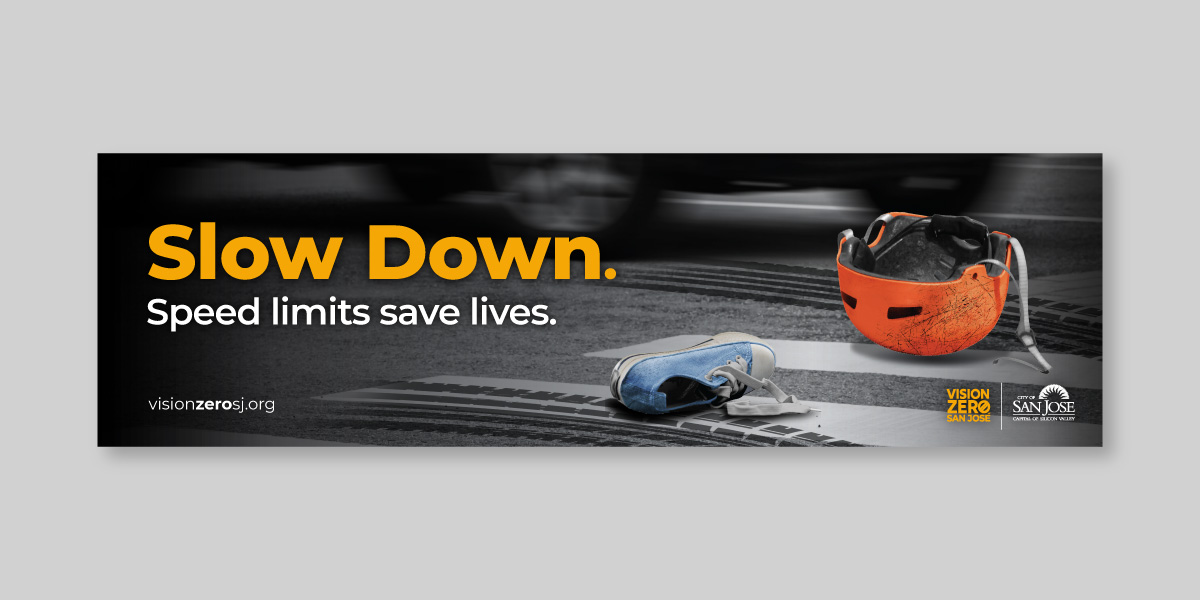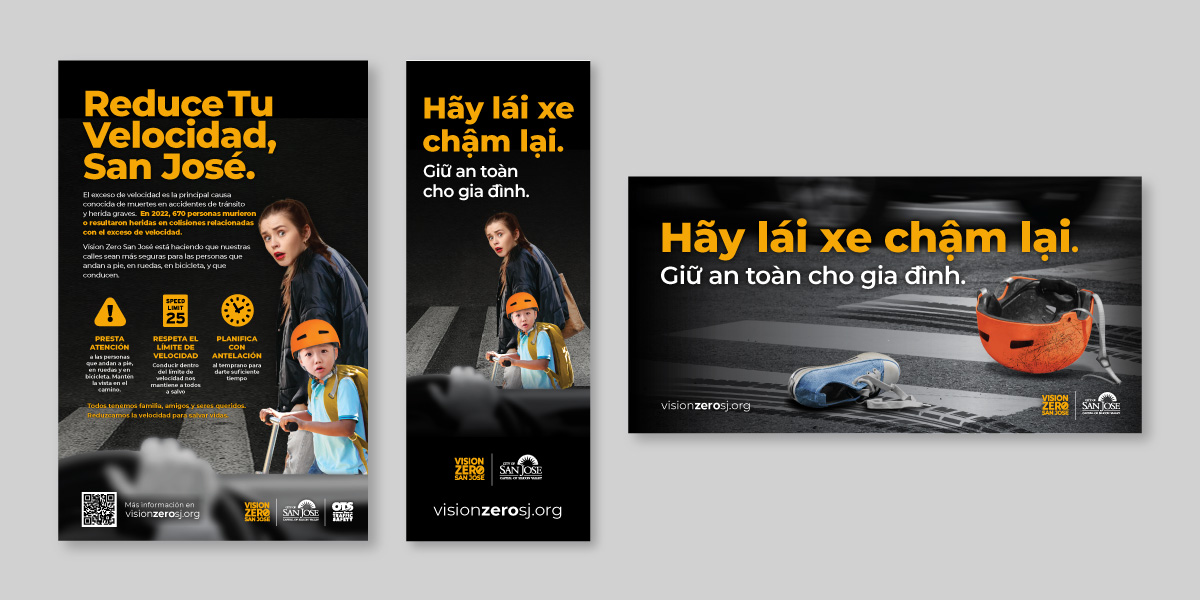San José is a city built for speed. It’s a big city, with big, wide streets; long arterials with express lanes and few crosswalks. With just 20% more population, San José has almost twice the number of annual traffic deaths as does neighboring San Francisco. That’s people in cars hitting each other, and also pedestrians, bicyclists and motorcycle riders. Bus stops are often in the middle of a very long block, and people disembarking don’t want to walk all the down the street to find a crosswalk—so they cross mid-block, where cars are driving fast.
San José has never done a citywide campaign to reduce those deaths. The first step was a quantitative phone survey. The survey revealed that San José drivers believe all of the following:
- Going a bit over the speed limit is not speeding.
- I go over the speed limit.
- Speeding is dangerous.
- It would be safer for pedestrians and bicyclists if people did not speed.
Clearly, there is a gap between what is perceived as speeding and the reality of speeding.
The second step was to conduct research into crashes, to determine the most common types of crashes, when and where they occurred, and why. Most speeding and crashes were on the surface street arterials, which have posted speed limits of 35-45mph. So even going over the speed limit slightly—which most did not think of as actually speeding—puts you at near-freeway speeds. And those are deadly speeds.
Finally, focus groups solidified the concept of a simple, hard-hitting and emotional campaign. Most of us are concentrating on driving, where we have to go, how fast we have to get there, and whatever podcast or music we’re listening to.
The message has to be easy to grasp: “Slow Down, San José.” The colors stark: safety yellow, San José teal and black. The visuals emotional: a single shoe and empty bicycle helmet roll into a skid mark. A tag line sums it up: “Tragedy Only Takes a Second.”
The 12-week campaign in English, Spanish and Vietnamese, kicked off with a press conference May 8. It’s on billboards, street signs, bus shelters, radio, store window posters and digital, as well as Facebook, TikTok and Instagram. Posters on the backs of buses were designed to look like you’re peering over your steering wheel right into the crash scene on the poster.
The advertising campaign is running simultaneously with an on-the-ground outreach campaign, working with over 20 community-based partners, including neighborhood and community groups and high schools. Teams hand out informational cards and an appealing activity book for youth.
A further quantitative study is schedule after the campaign runs to test street speeds, and changes in perceptions about speeding, after this first citywide effort.


